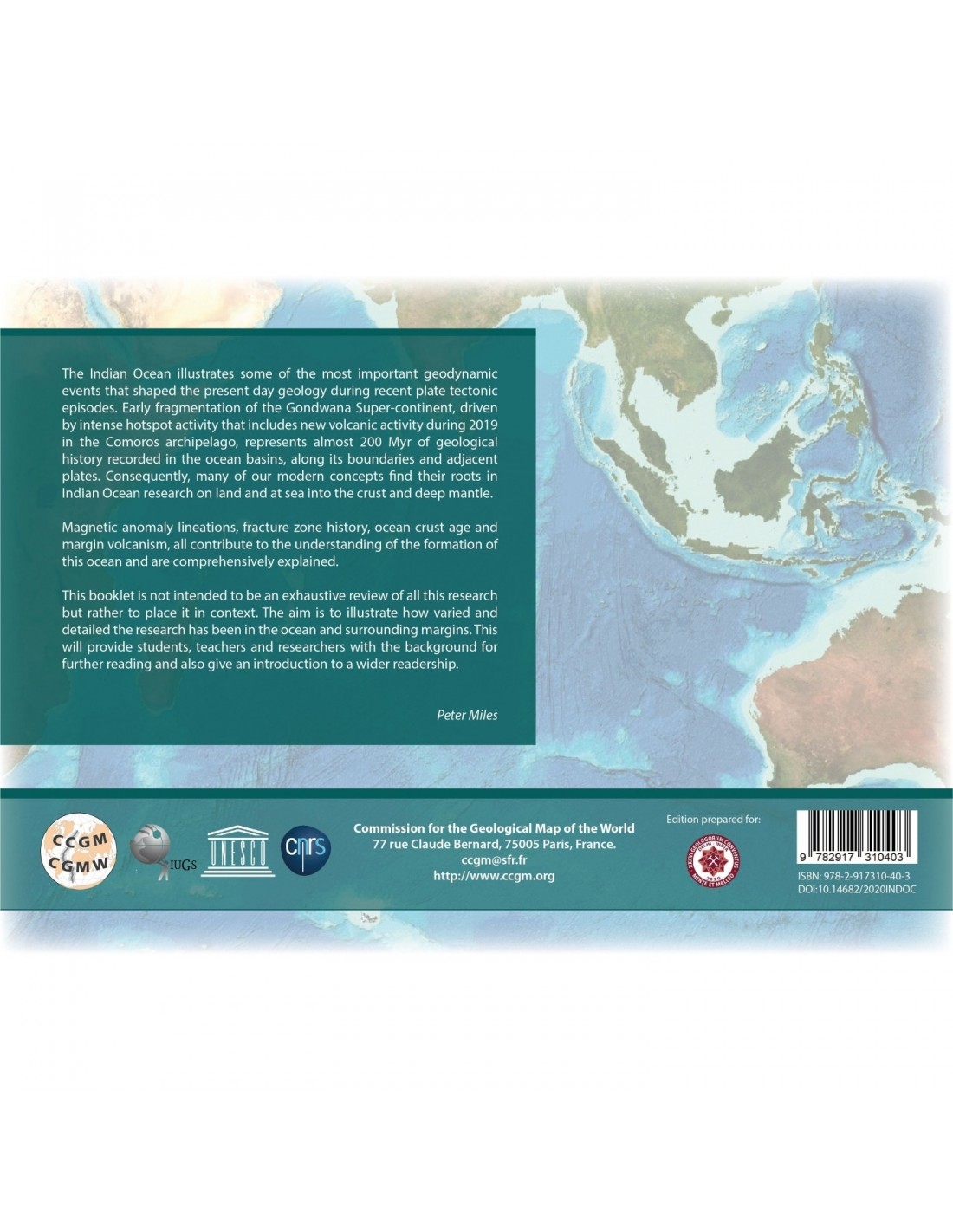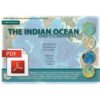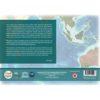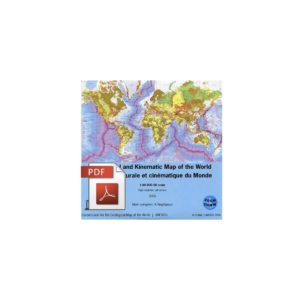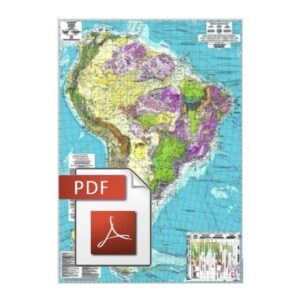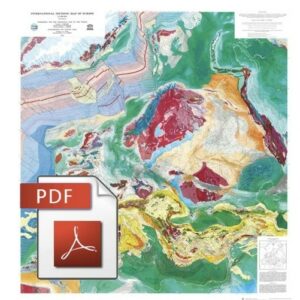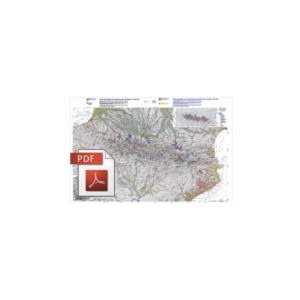Dans le cadre de notre engagement écologique, nous sommes en train de changer d’hébergeur pour un fournisseur plus respectueux de l’environnement. Le site est actuellement en préparation pour cette transition.
Les commandes sont temporairement suspendues le temps de finaliser la migration.
Merci pour votre patience et votre soutien.
Nous avons hâte de vous retrouver très bientôt avec un site encore plus éthique et performant !
The Indian Ocean and its Margins-PDF
27,00 €
The Indian Ocean and its Margins-PDF
60 pages
Publié en juillet 2020
En anglais uniquement
© CGMW-CCGM Series
Coordination : Mathieu Rodriguez & Manuel Pubellier
Editors: Philippe Rossi, Camille François & Peter Miles
The Indian Ocean and its Margins-PDF
Description
The Indian Ocean and its Margins-PDF
Version .pdf envoyée par lien de téléchargement.
Note : Ce livret est soumis à un contrat de licence.
Ce livret est également disponible au format papier sur notre catalogue.
The Indian Ocean and its Margins-PDF
Authors: M. Arnould, G. C Bhattacharya, G. Calvès, M. Cannat, N. Chamot-Rooke, M. Delescluse, J. Dyment, N. Ellouz-Zimmermann, J. Escartin, M. Fournier, D. Franke, P. Huchon, A. Janin, S.G. Kumar, E.S. Mahanjane, M. Mathew, D. Menier, J.A. Olive, M. Pubellier, A. Rabaute, M. Ramkumar, M. Rodriguez, M. Santosh, D. Sauter, B. Sautter, M. Searle, M. Seton, M. Shuhail, M. Tsekhmistrenko, C. Vigny, V. Yatheesh.
The Indian Ocean has witnessed some of the most important geodynamic events that shaped our present-day Earth during the last plate tectonic episode. From the early fragmentation of the Gondwana super-continent sustained by an intense hotspots activity to the real-time birth of a new volcano in 2019 in the Comoros Archipelago, almost 200 Myr of geological history is recorded within the sub-basins of the Indian Ocean or along its boundaries with surrounding plates. Correlatively, many of our modern concepts actually nd their roots in the observations made in the Indian Ocean region, including on land, at sea, and even deep in the mantle.
The Indian Ocean and its Margins-PDF is not intended to be an exhaustive review of all these ndings, but rather to spot some of them. The aim is to illustrate how rich and vivid the research is in the Indian Ocean and surroundings, providing students and teachers with some hard backgrounds on one side, but keeping it close enough to present-day ongoing researches on the other side.
The Indian Ocean and its Margins-PDF
The first set of papers deals with the main structural elements of the Indian Ocean in relation to its opening and past and present kinematics. Chamot-Rooke recalls the present-day plate kinematic framework through a comparison of geologic (3 Ma-averaged) and geodetic (GPS) models. Arnould et al. discuss the specicity of the Indian Ocean plumes which recorded the fast migration of India, with clues as to how they connect to the deep mantle. Calvès further shows how the Réunion plume interacted with rifting along the Deccan western margin of India, forming one of the largest onshore/oshore Large Igneous Province. Yateesh et al. propose a revised plate tectonic reconstruction for the opening of the Arabian Sea based on oceanic magnetic lineations, recalling that much of what we know of the kinematic evolution of the Indian Ocean relies on magnetic interpretation.
In the second set of papers, the large-scale geological record of the India-Eurasia migration and collision is discussed both from the land and sea perspectives. Searle gives a synthesis of the structural elements of the Himalaya, including major units and tectonic zones, best explained by a crustal-scale channel ow and ductile extrusion model. Rodriguez discusses the debate of the timing of India-Eurasia collision from the point of view of its record in the Indian Ocean’s fabric. Sautter and Pubellier further show that the Cenozoic deformation of the Sunda margin, including mountains and basins, can be explained by the basal side-drag of India.
The third set of papers shows some of the spectacular morphology imprinted in the deep Indian oceanic floor, all related to active faults. Cannat et al. depict the three types of seaoor morphology found at the ridge axis expressing dierent modes of spreading (volcanic, corrugated, smooth), a well-established concept born following surveys at the ultraslow Southwest Indian Ridge. Rodriguez et al. use multibeam maps to illustrate active shear and associated pull-apart basins and push-up ridges along the Owen Fracture zone and Owen Transform. Delescluse and Chamot-Rooke illustrate the style of intraplate deformation active in the Central Indian Ocean using seismic proles, and further discuss the relationships with the great 2004 megathrust and 2012 mega-strike-slip earthquakes.
In a final set of papers, strong interactions between climate, tectonics and sedimentary transfers from land to sea are presented. Ellouz-Zimmermann reviews the development of accretionary prisms and fold-and-thrust belts on both sides of India (Makran and Indo-Burma wedges), emphasizing the role of India kinematics, inherited margin basement architecture and climate driven erosion/deposition processes. Ramkumar et al. analyze the young landscape and drainage pattern of the Indian subcontinent and conclude to the inheritance and continuum of Gondwanan structural trends. Finally, Manhanjane and Franke describe a gravity-driven fold-and-thrust belt at the foot of the Mozambique continental margin that link to uplift related to the formation of the East Africa Rift System.
The Indian Ocean and its Margins-PDF


